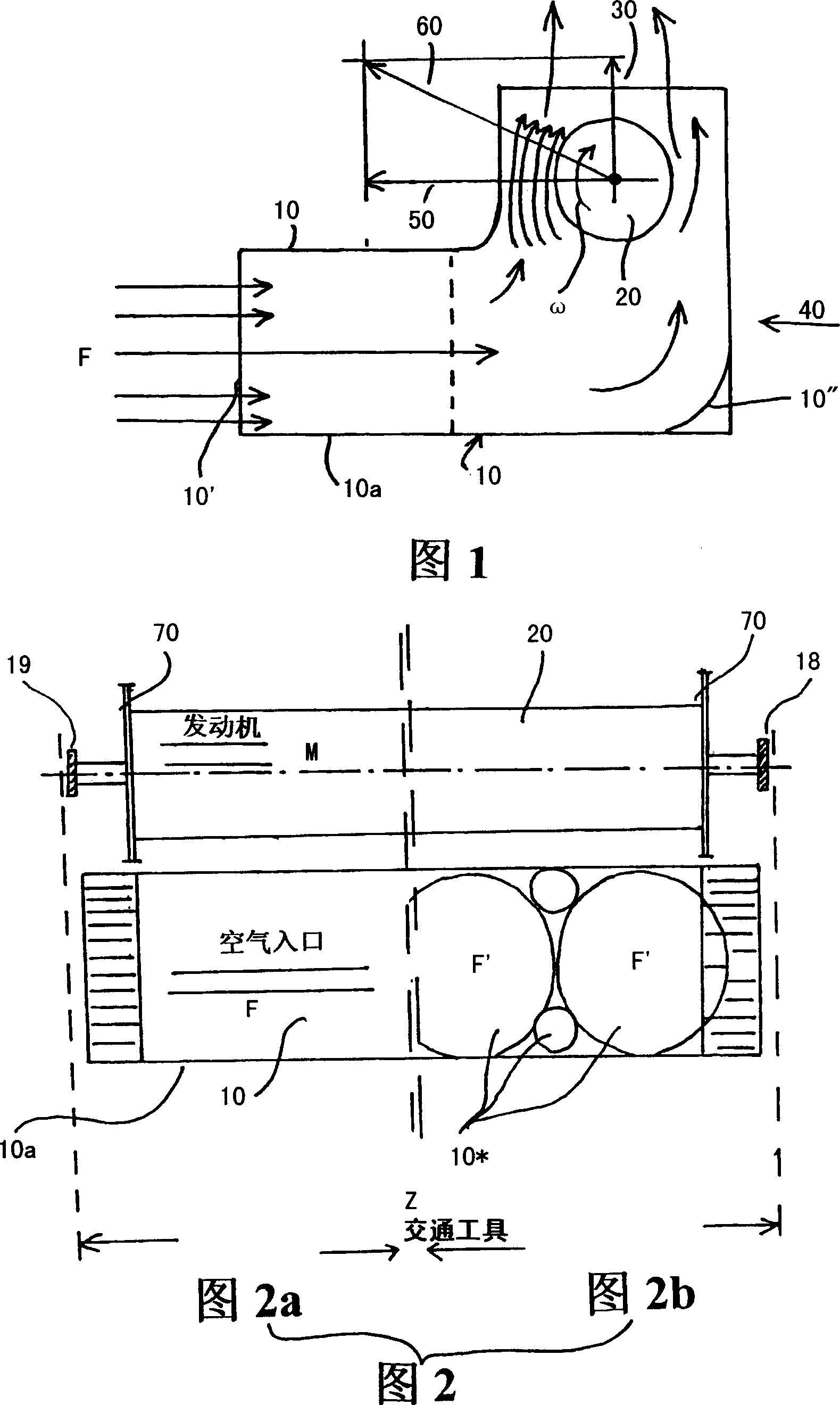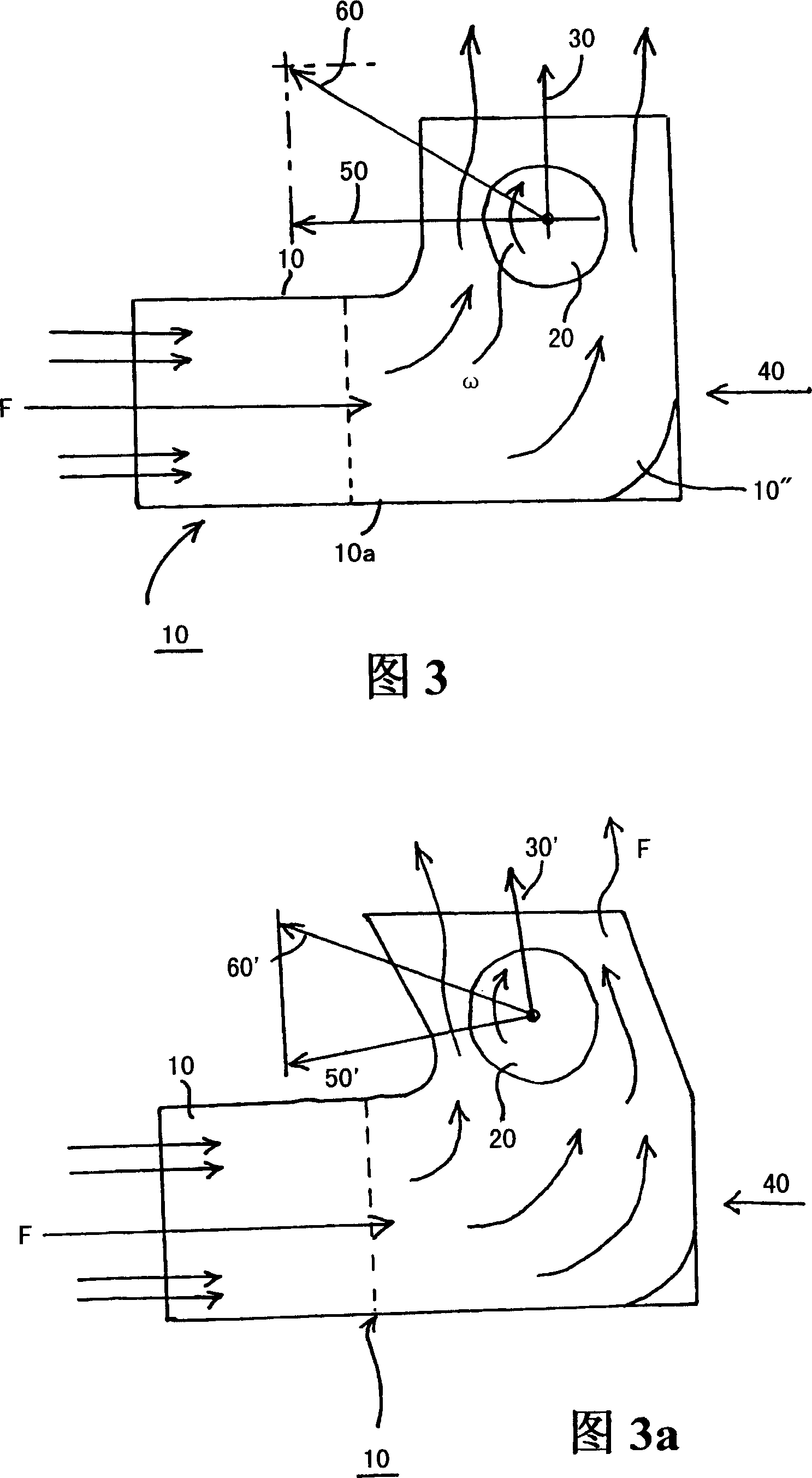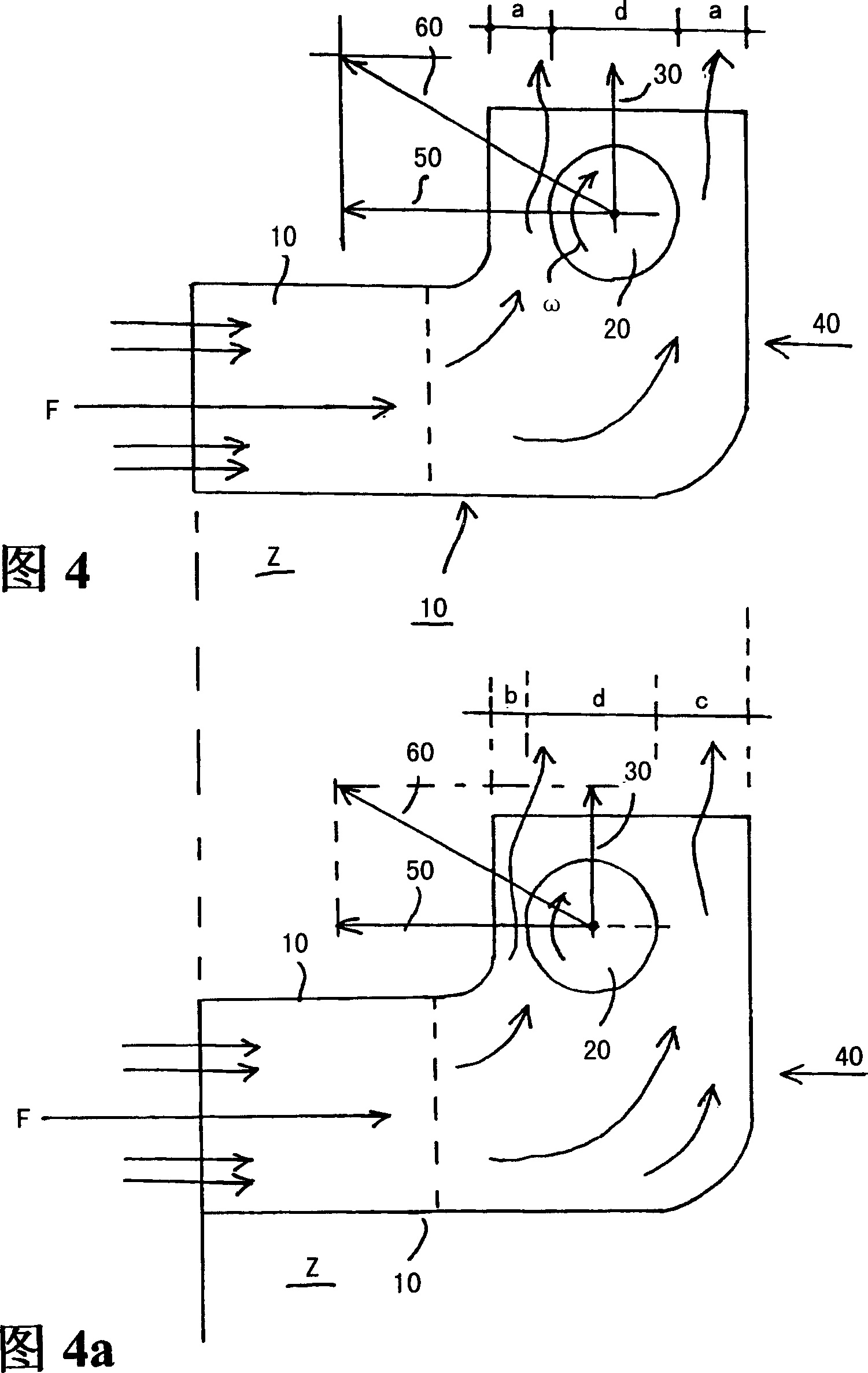Additional drive system by diverting a fluid flow
A driving device, a technology for additional driving, which is applied in the directions of wind turbines, motors, transportation and packaging at right angles to the wind direction, and can solve problems such as transportation tools that cannot be used in relatively fast movements.
- Summary
- Abstract
- Description
- Claims
- Application Information
AI Technical Summary
Problems solved by technology
Method used
Image
Examples
Embodiment Construction
[0022] FIG. 1 shows a first embodiment in which the travel wind F enters the channel 10 and is deflected upwards before hitting a horizontally arranged rotating cylinder 20 . This produces a first force 30 and a second force 40 acting on the channel 10 . But the driving force or lateral driving force produced by the rotating cylinder is 50 times greater and a "synthetic force" 60 is generated as the propulsion force. This force is transmitted to the vehicle Z (not shown) (shown below the channel 10 in FIG. 2 ). Here too, a main forward drive (not shown in further detail), such as a motor driving the wheels via a transmission, is provided.
[0023] As shown in FIG. 1, the traveling wind entering the channel 10 enters an inlet 10', is then directed through a section of the channel and is turned upward at a turning point 10" so as to pass to a rotating cylinder 20 located in a higher section. The rotational velocity and direction ω of the cylinder are marked such that the corre...
PUM
 Login to View More
Login to View More Abstract
Description
Claims
Application Information
 Login to View More
Login to View More - R&D Engineer
- R&D Manager
- IP Professional
- Industry Leading Data Capabilities
- Powerful AI technology
- Patent DNA Extraction
Browse by: Latest US Patents, China's latest patents, Technical Efficacy Thesaurus, Application Domain, Technology Topic, Popular Technical Reports.
© 2024 PatSnap. All rights reserved.Legal|Privacy policy|Modern Slavery Act Transparency Statement|Sitemap|About US| Contact US: help@patsnap.com










